25-20 Winchester
Improved Accuracy and Long-Range Performance
feature By: Brian Pearce | June, 25
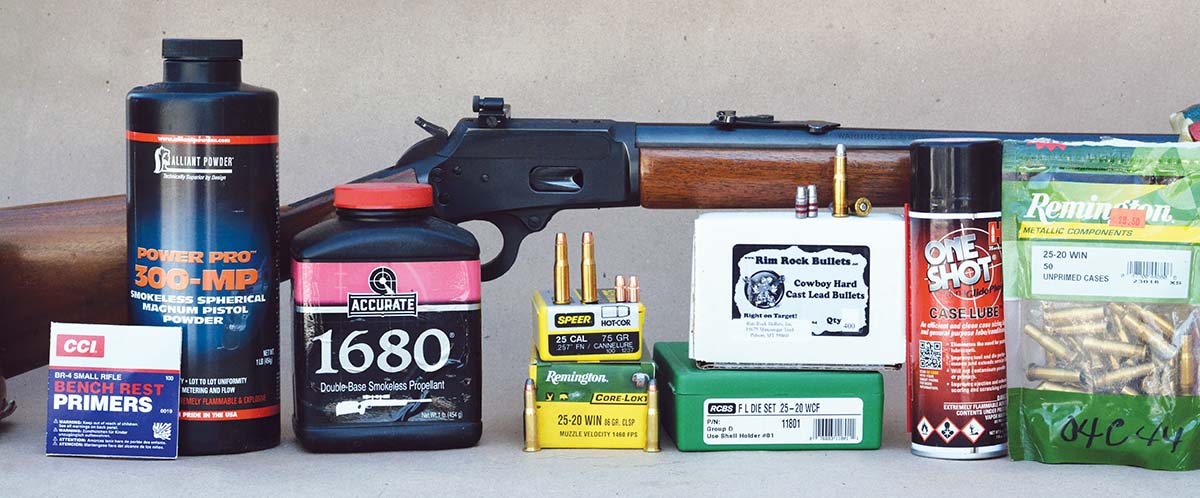

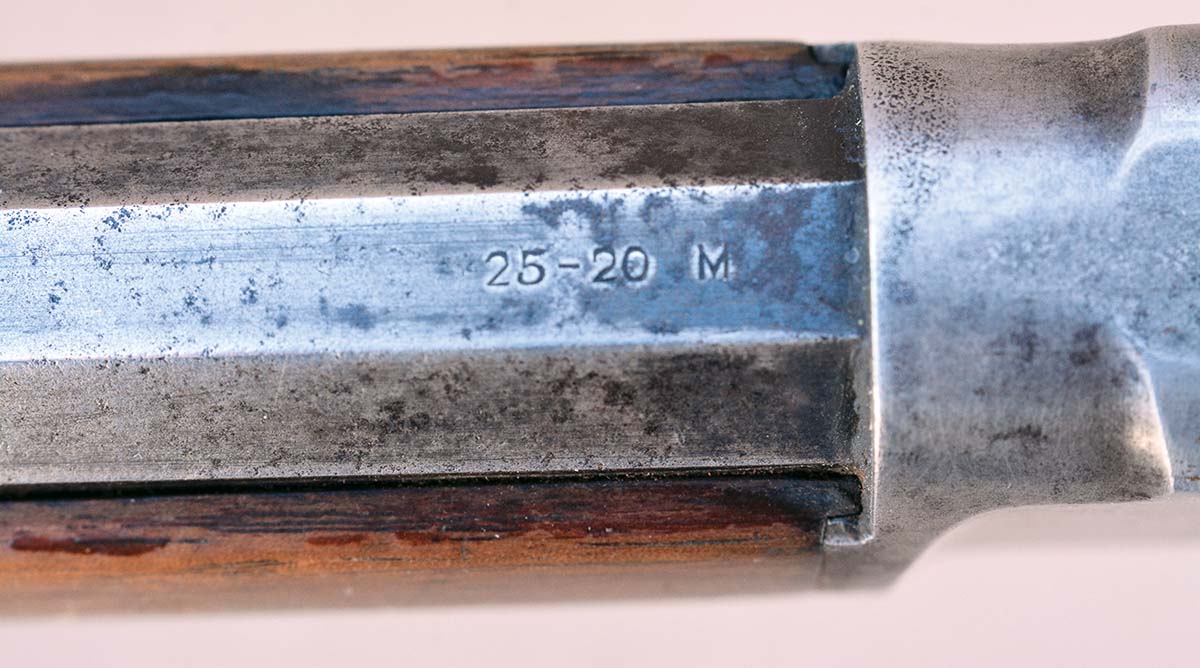
By August 1895, Winchester took note of the virtues of the 25-20 Marlin cartridge and offered it in their slick little Model 1892 lever-action rifle. It was based on a necked down 32-20 Winchester case but with changes to the shoulder position and angle. Original loads contained an 86-grain lead bullet pushed to around 1,376 feet per second (fps) using 17.0 grains of black powder. Even though Winchester offered both 25-20 Marlin and 25-20 Winchester ammunition until at least 1916 (and probably much later), the two cartridges were fully interchangeable. There are reports of minor differences in bullet design, and, of course, each had its own headstamp identification. Depending on the source, Marlin had developed the cartridge at least 2 years before Winchester put their name on it. It was first offered in their Model 1889 rifle, followed by the Model 1894. This is a little humorous, but the competition was strong between Winchester and Marlin; neither of them wanted to put the other’s name on their rifle, even if it was only to identify the caliber! Today it is universally known as the 25-20 Winchester.
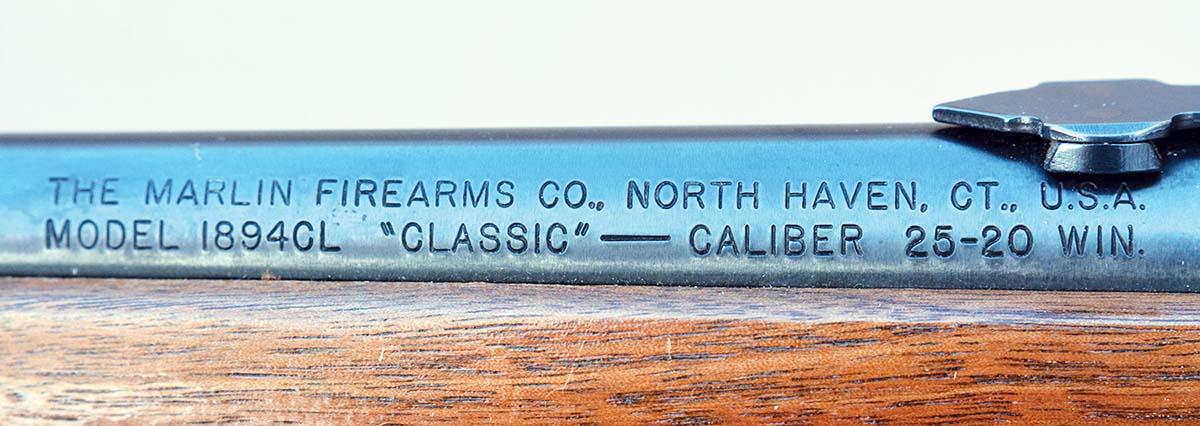
Although the .22-caliber (22 Short, 22 Long and 22 Long Rifle) rimfires were developed prior to the 25-20, they needed further improvements, better rifles and were not yet in widespread use. The 32-20 was popular with hunters and trappers to dispatch varmints and pests, take small game, slaughter livestock, perform many other tasks and effectively filled the role that the above rimfires would eventually own. It was also commonly used on deer. Colt offered their Single Action Army in 32-20, which added to its popularity. The 25-20 offered a slightly flatter trajectory and lower recoil and was known for outstanding accuracy. When smokeless powders began appearing, new loads were offered that made the little cartridge far more interesting. For example, a jacketed 86-grain load appeared, and velocities were eventually bumped up to over 1,400 fps. Winchester soon offered a “.25-20 High Velocity” load that pushed the same 86-grain bullet to a listed velocity of 1,732 fps, while pressures were reported to run 27,000 to 30,000 pounds. That load had a reputation for poor accuracy. During the middle 1920s, another new load was offered that contained a 60-grain mushrooming hollowpoint bullet pushed to 2,250 fps and was referenced as “.25-20 W. M&R Hi-Speed.” This load worked fabulously with explosive effects on varmints. Many rifles produced around MOA accuracy. The effective range was doubled compared to the original black-powder load, resulting in foxes and coyotes that could be taken with some degree of reliability at 200 yards. This was prior to the development of the 22 Hornet, 218 Bee, 220 Swift, 222 Remington and a host of fabulous varmint cartridges that we enjoy today. Roughly 100 years ago, the 25-20 was a varmint round held in high regard.
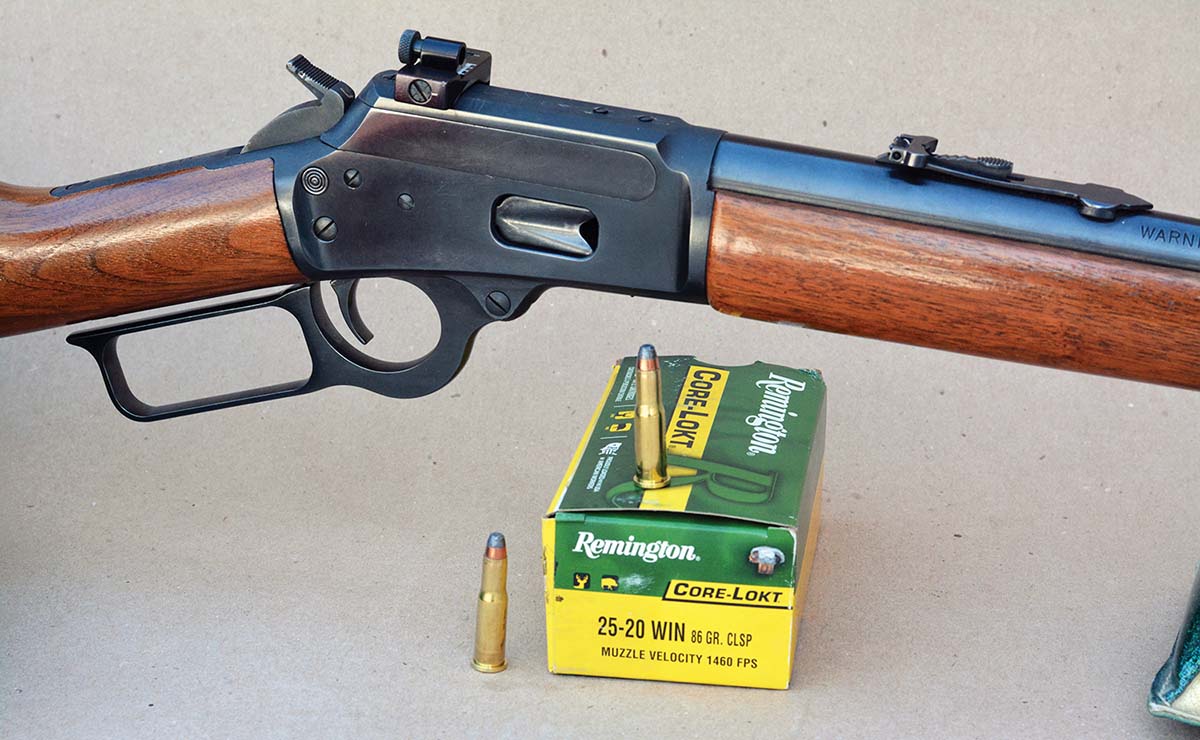
The late Gary Sitton, who often graced the pages of Handloader many years ago, loved the 25-20 for Arizona jackrabbits and regularly used it in Texas when hunting turkeys, javelinas and game of similar size. He told me the Marlin Model 1894CL Classic was one of his “absolute most favorite rifles.” I hunted multiple times with Gary and never learned of his exact handload recipe, but he was using the Remington 86-grain bullet pushed to around 1,800 fps. A friend who is a mobile butcher uses an original Marlin 1894 25-20M that has been in his family since it was purchased new around 1900. His handloads consist of 86-grain cast bullets pushed to around 1,800 fps, which have proven ultra-reliable even on older bovine with heavy, thick bone mass that can be difficult to penetrate. I recently watched as he dropped an old 2,500-pound range bull with a single shot. Soon after that, he was called upon to slaughter a large bison just a few miles from my home, which again was dropped in the field with a single, precisely placed shot. Perhaps the most famous feat of the 25-20 was when it was used to take the famous James Jordan world record (largest typical) whitetail buck taken in 1914, which held that position for around 80 years. It remains the largest ever taken in the U.S. and is 2nd largest in the world. To be clear, the 25-20 is not an ideal deer cartridge, but in the hands of a skilled hunter, it will put meat on the table if necessary.
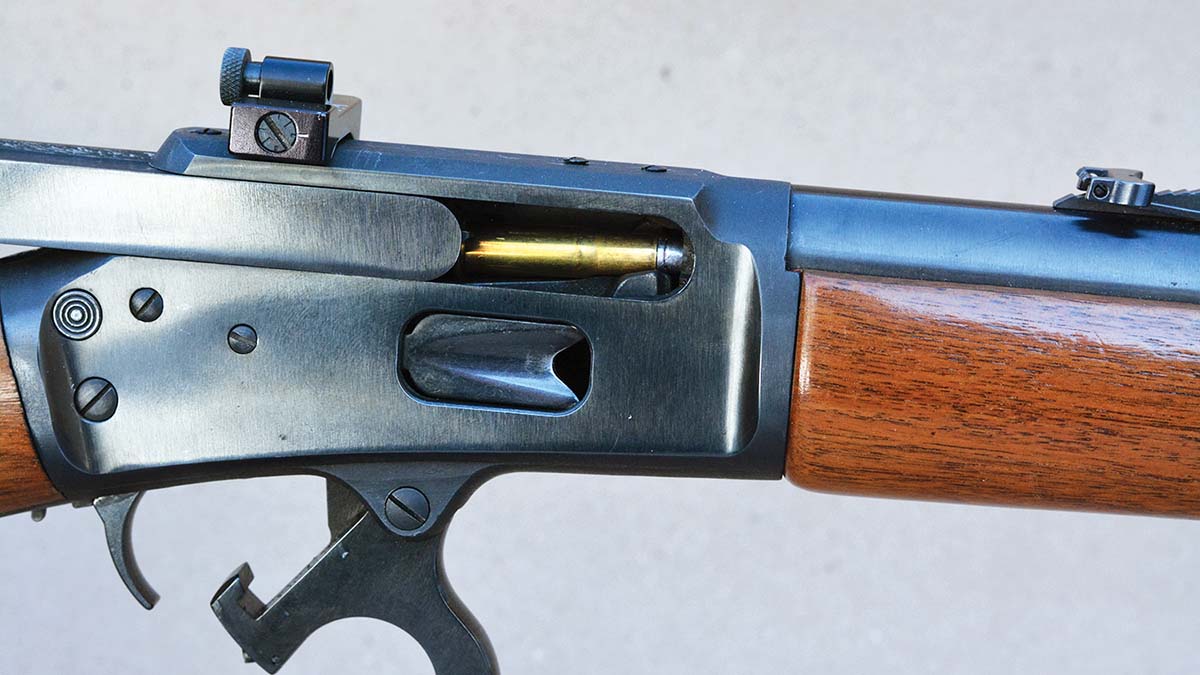
As indicated, the 25-20 is most commonly encountered in Winchester and Marlin leverguns. However, it has been offered in various single-shot actions, bolt-action and pump-action rifles. For today’s purposes a Marlin Model 1894CL Classic with 22-inch barrel was used to develop Pet Loads data. These rifles were first produced in 1988 and featured 6 land/groove Ballard-style rifling, 22-inch barrel and 2⁄3-length magazine (and were also offered in 32-20 and 218 Bee). A William’s aperture sight was fitted many years ago when I first acquired this rifle. A second rifle, an original Marlin 1894 with a 24-inch barrel, was also used to cross-reference loads for function and accuracy.
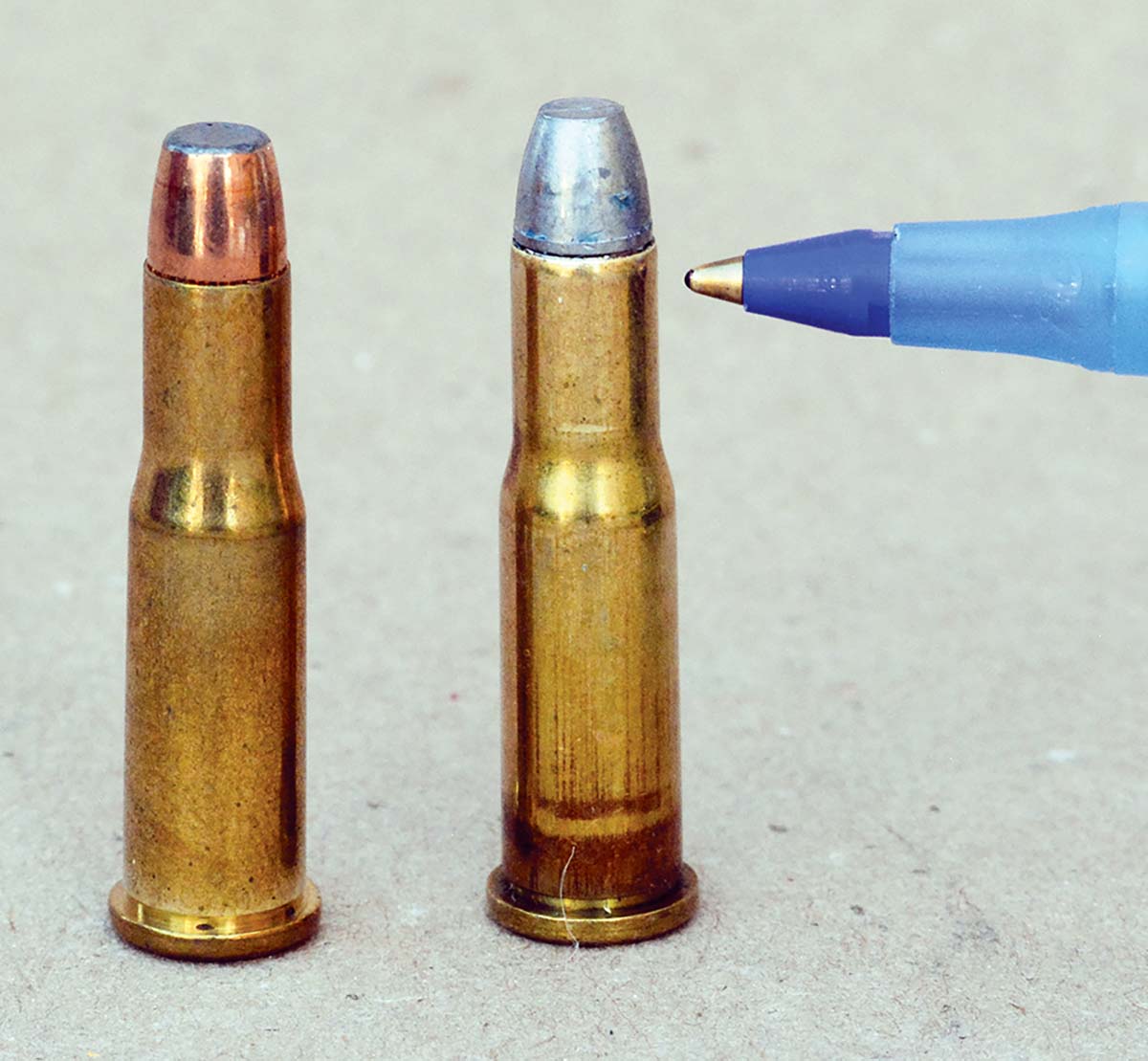
Today’s factory loads from Remington and Winchester list an 86-grain JSP bullet at 1,460 fps, with the last of the lead bullet and high-velocity jacketed loads disappearing in the 1960s. At press time, the Remington load was the only one available for testing that clocked 1,383 fps from the test rifle, and groups hovered around 2 to 2.5 inches at 75 yards (which we will improve upon substantially with handloads). Pressures of factory loads run from 20,000 to 21,000 CUP; however, the Sporting Arms and Ammunition Manufacturers’ Institute (SAAMI) lists the maximum average pressure as 28,000 CUP. The factories claim their loads are held to lower pressures due to early rifles and their lack of strength. However, black-powder era Marlin Model 1889 and 1894 rifles and Winchester Model 1892 rifles are strong enough to handle the 28,000 CUP loads and were recommended by both Marlin and Winchester for the Hi-Speed smokeless loads that appeared shortly after 1900 that were generating 27,000 to 30,000 pounds of pressure. It seems that the only goal of today’s factory ammunition is to offer a load with similar ballistics to early loads.
The accompanying Pet Loads data was generally held to 28,000 CUP, but there are a few loads listed that modestly exceed that figure and can generate up to 32,000 CUP. These loads are marked as +P and are only recommended for modern guns, such as the Marlin Model 1894CL Classic used herein. Critics of the above pressure levels might point out that the 25-20’s case should not be loaded to that figure. It is true that the case is thin; however, when Winchester developed the 218 Bee in 1938, it was based on the 25-20 case and was loaded with pressures of 40,000 CUP. Granted, within a few years Winchester recognized the need to slightly strengthen the Bee case, but the 25-20 case will readily handle 32,000 CUP loads in modern rifles. It should be noted, however, that case life will be shortened –the same as any other case when loaded with higher pressures.
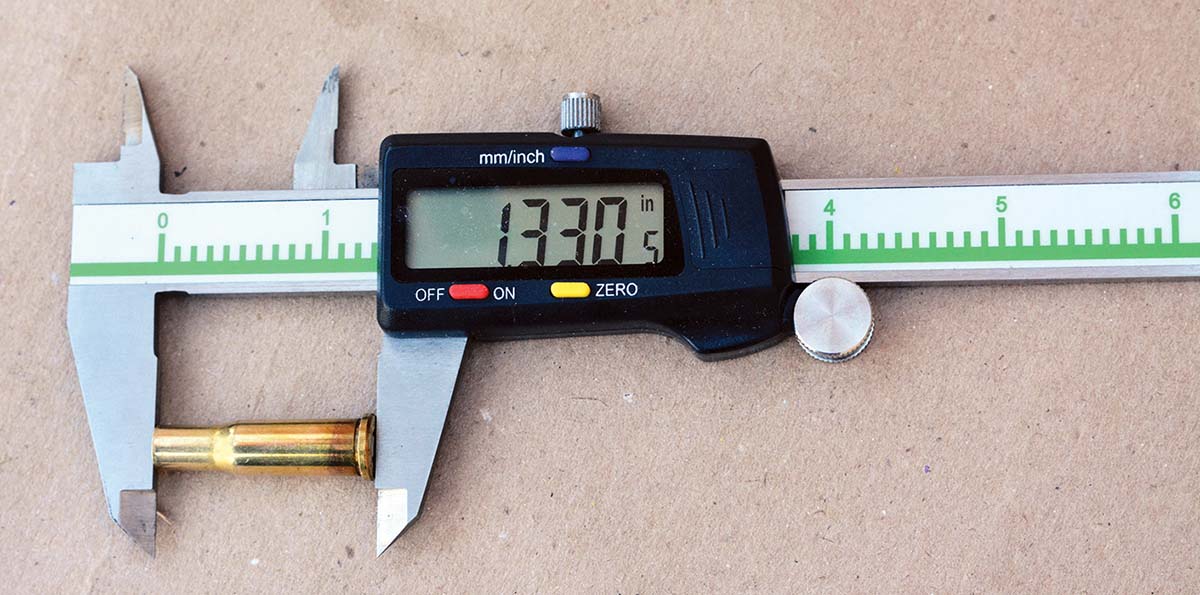
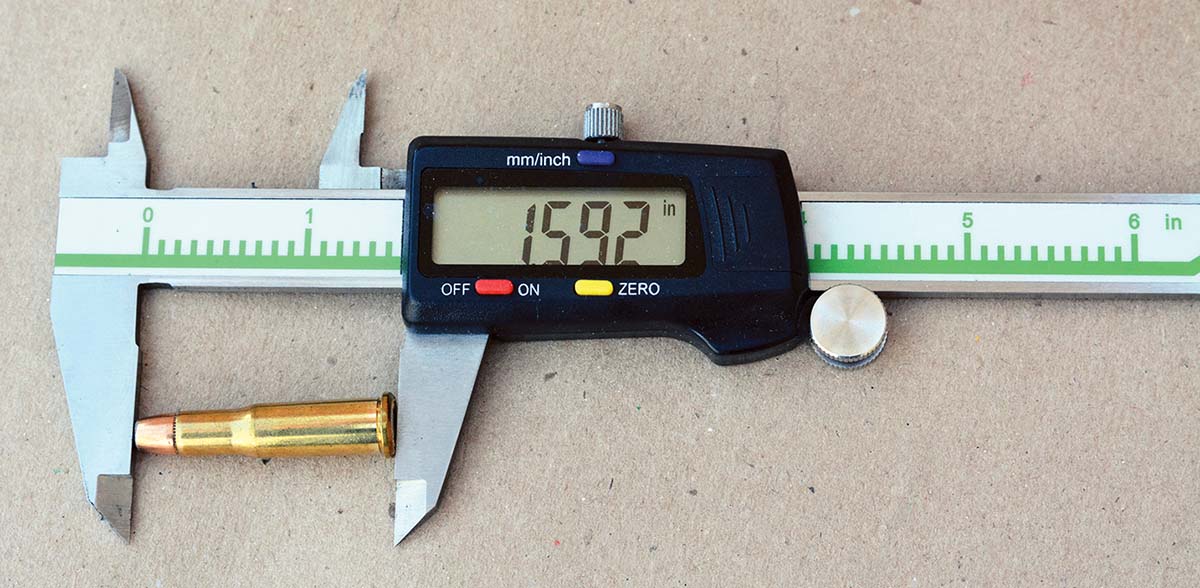
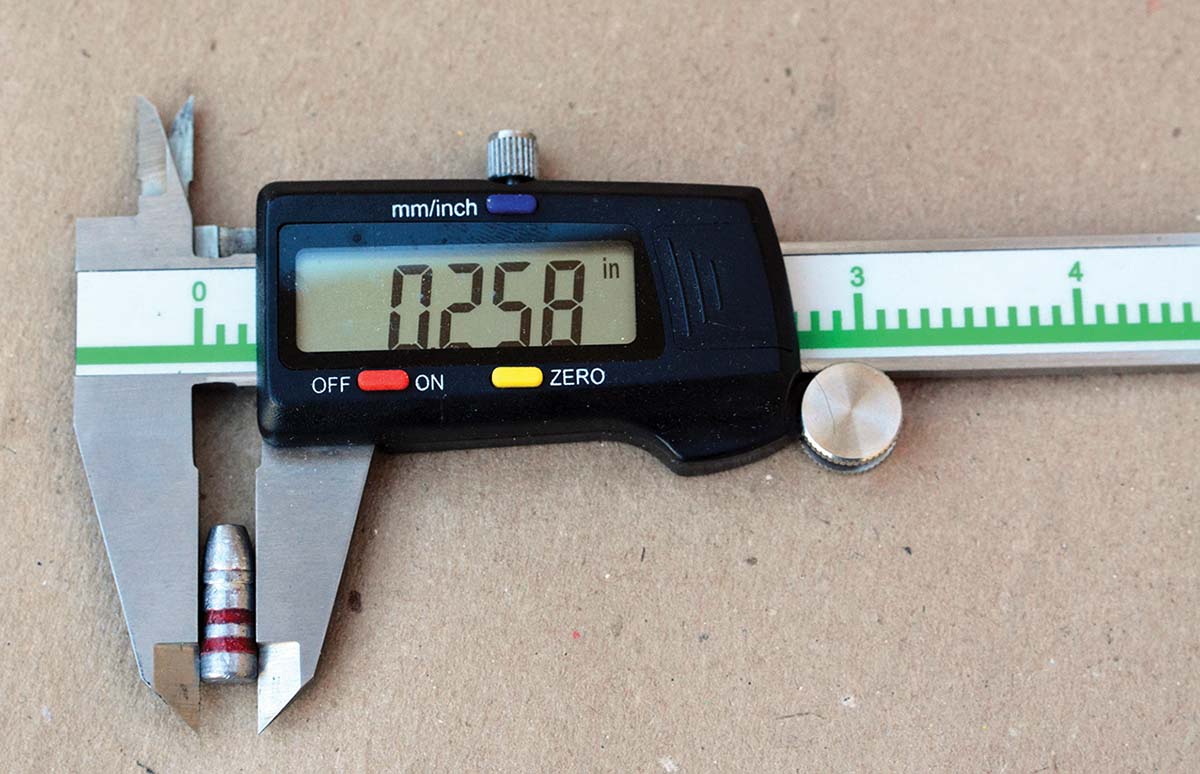
The 25-20 is not difficult to handload, but a few tips will help make the process trouble-free. First, standard die offerings are typically two die sets, but it’s my opinion that all die sets should consist of three dies and here is why. Cases should be full-length sized and checked to ensure that they are of the correct SAAMI case length, which is 1.330 inches maximum. Incidentally, uniform case lengths will result in uniform crimps. These crimps are essential for producing quality handloads and are necessary to prevent bullets from being deep seated in lever-action rifles with tubular magazines and also to prevent the battering of cartridges when they are being cycled through a lever action. Regardless, cases should be chamfered inside (and outside if cases were trimmed) to help bullets “start” in the seating process.
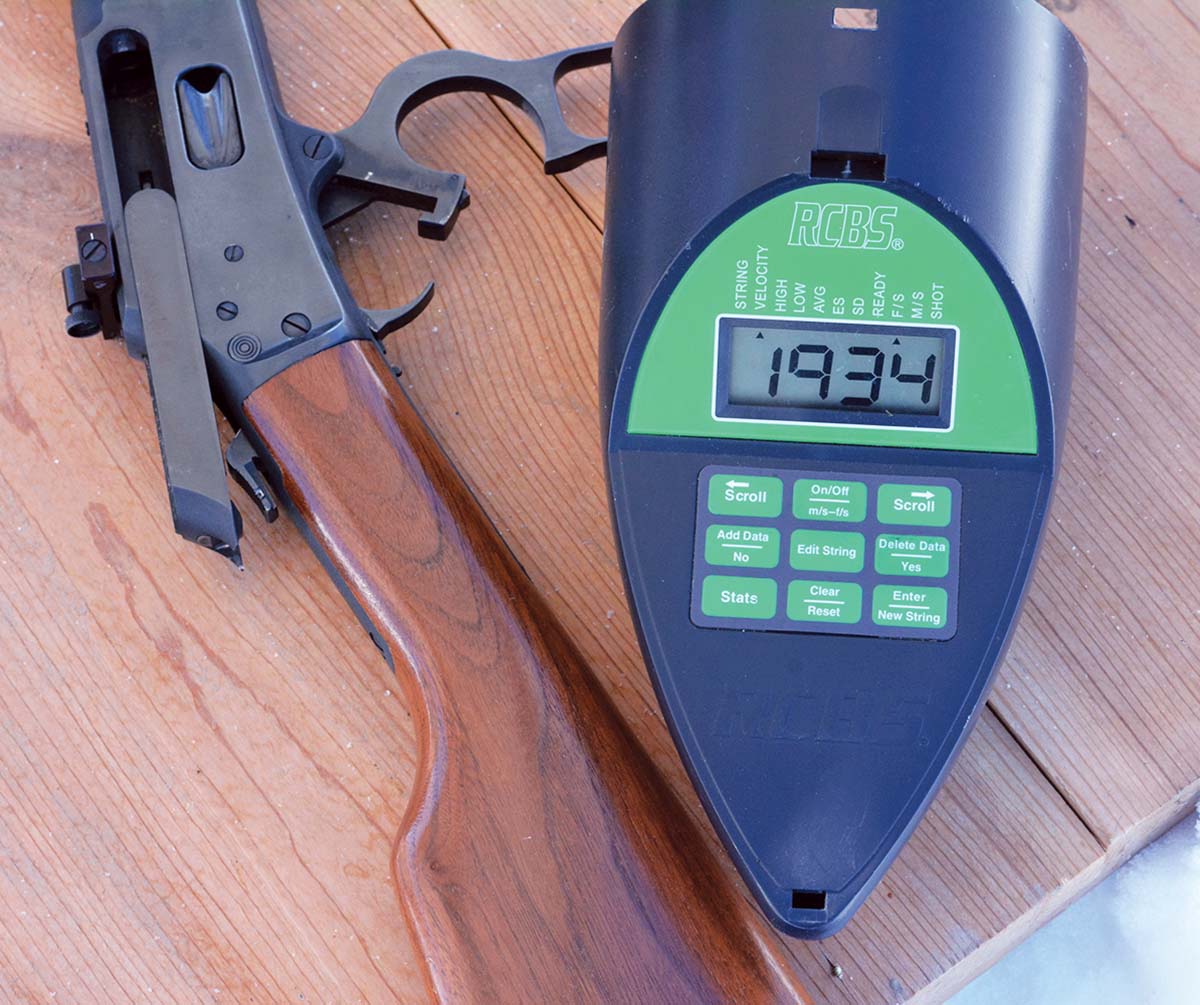
The problem is that bullets, both jacketed and cast, can still be difficult enough to seat and the thin case buckles under that pressure. Naturally, this ruins the case (see photo). The other cause of case buckling is that the bullets cannot be held straight while the case and bullet are inserted into the seating/crimp die; rather, they just rest on the top of the casemouth. If the bullet starts to seat while tilted, the case will buckle or be damaged. More than 45 years ago, when I first started handloading the 25-20, I made a special expanding die that would flare the casemouth just enough to hold the bullet straight and allow it to sit without snagging on the casemouth. This step not only applies to jacketed bullets but is essential when loading cast bullets to prevent shaving lead off when the bullet is seated. Expanding the casemouth results in bullet seating with less run out, avoids damaging cases and is much easier (and faster) to load cartridges. I strongly suggest obtaining Lee Precision’s Universal Case Expanding Die, which accomplishes the same thing as my homemade die and is what I used herein.
The roll crimp should be as heavy as a given bullet will allow but should never cause damage to the case or the bullet.
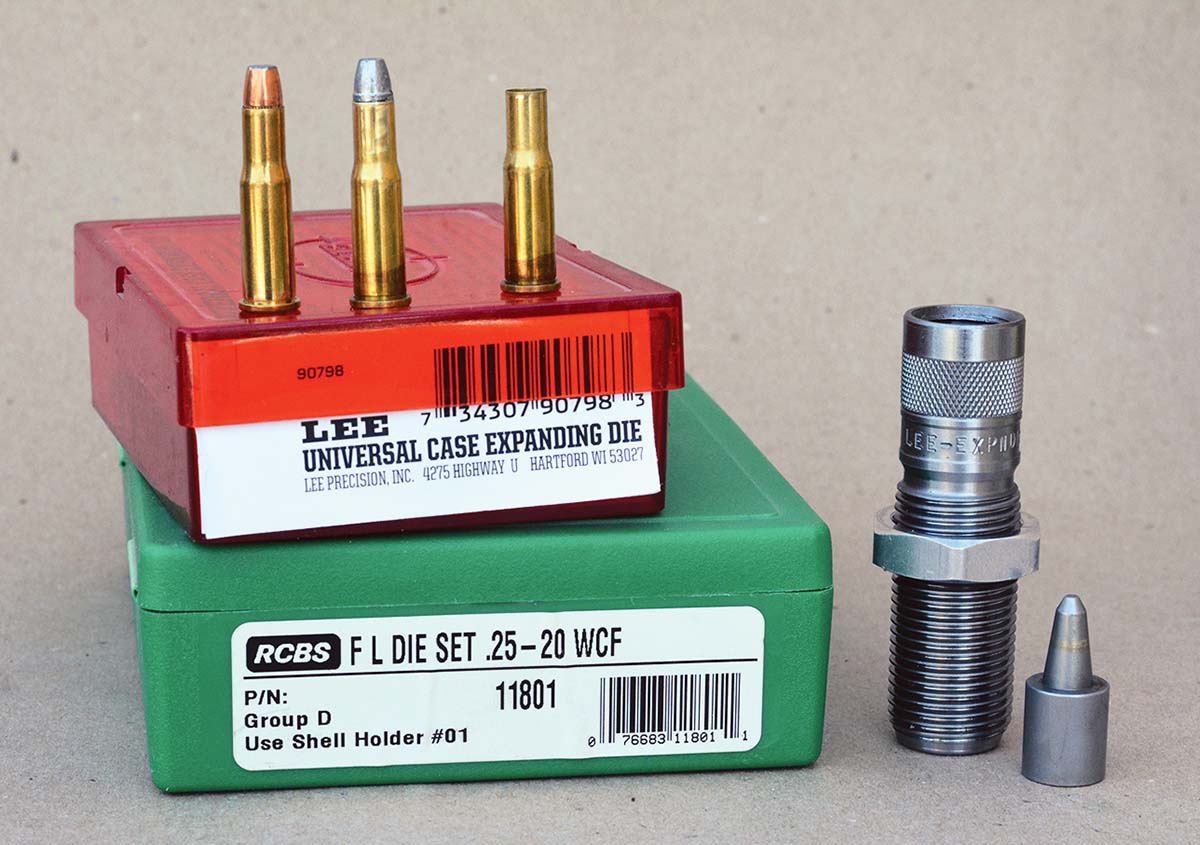
The jacketed bullet selection for the 25-20 is not extensive. In fact, from mainstream commercial bullet manufacturers, there are only two, and they include the 60-grain Hornady FP and the 75-grain Speer Hot-Cor FN. Both are excellent bullets and worked perfectly in regard to function and accuracy. I was able to push the 60-grain Hornady bullet to over 2,200 fps (using Accurate 1680 powder) while staying within industry pressure limits. Select loads produced around 1.25-inch groups at 75 yards. This bullet was designed specifically for 25-20 velocities and gives excellent results on pests and varmints. The Speer 75-grain bullet is a special favorite as it can be pushed to over 2,000 fps and is exceptionally accurate with select groups measuring just over one inch. It works well on pests and varmints the size of large coyotes and will fully penetrate 70-pound javelina on broadside shots, resulting in one-shot kills. It should be noted that Winchester and Remington have historically offered their 86-grain jacketed softpoint bullets as a component to handloaders; however, they have not been available for several years. Nonetheless, I have some of the Remington bullets on hand and offered select data that duplicates, or exceeds slightly, factory load velocities. A contact at Remington indicated that from time to time, they would offer bullets as a component, so it seemed prudent to include data.
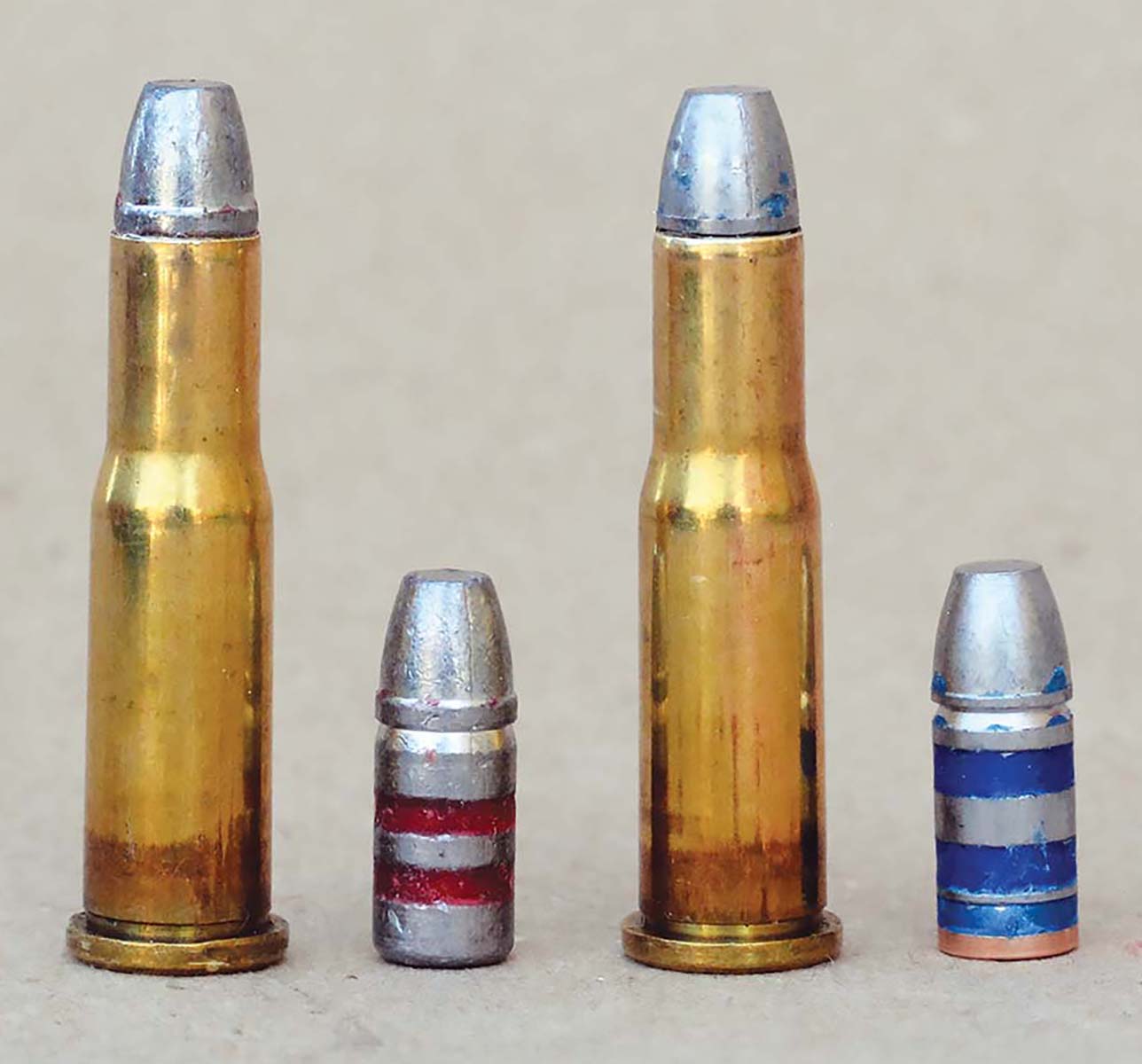
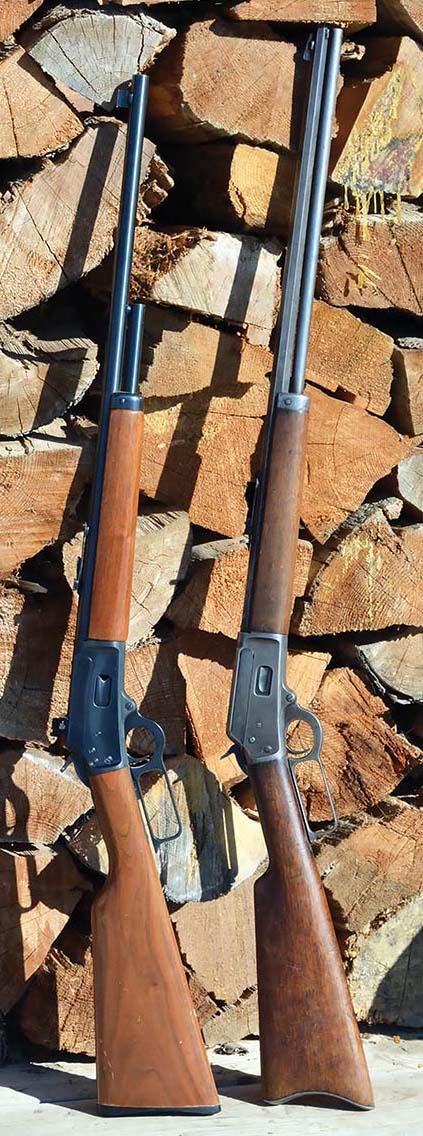
Cast bullets can give excellent results in the 25-20, with all examples being sized to .258 inches. Lyman mould 257420 features a gas check and usually has a cast weight of around 65 grains. It has proven accurate with low-velocity loads of 1,200 to 1,300 fps or can be pushed to as high as 2,200 fps with good results. Another excellent bullet is the NOE 85-grain flatnose gas check with a .150-inch meplat. Again, with velocities ranging from 1,050 fps to just over 1,900 fps, accuracy was excellent. For older rifles that may have a pitted bore (due to black powder and/or corrosive priming and lack of timely cleaning), the above gas check bullets are good choices as they reduce fouling and can help those older barrels produce respectable accuracy. Rim Rock Bullets 85-grain RNFP is a good choice for low-cost plinking and target work, with most Pet Loads data targeted to reach 1,000 to 1,400 fps.
It has been many years since most reloading manuals have updated data for the 25-20, with some of it dating back to shortly after World War II. There is nothing wrong with some of that “classic” data, as powders such as Alliant 2400, IMR-4227, IMR-4198 and Hodgdon 4198 offer excellent overall results. However, I also elected to use many newer powders that have never been published with the 25-20 data. These loads offered outstanding overall performance with excellent accuracy, low extreme spreads and clean burning characteristics. Powder charges can be thrown with great accuracy (which is really convenient when loading this small capacity cartridge). A few examples include Hodgdon Lil’Gun, Accurate No. 9, Accurate No. 11FS, Ramshot Enforcer, Alliant Power Pro 300-MP and others. I was especially pleased with the overall performance of A-1680 powder for high velocity loads.
I once heard the 25-20 described as being “polite.” That description actually fits, as it produces extremely mild recoil, a modest muzzle report and is most often housed in compact, handy lever-action rifles. With cast bullet handloads that produce 1,000 to 1,300 fps, it makes an excellent pot gun. When pushed to 2,000 to 2,200 fps, it’s a fun varmintor at appropriate distances, but can readily take javelina and similar game. Regardless, with new powders, handloaders can substantially improve accuracy and performance.
.jpg)
.jpg)
.jpg)


